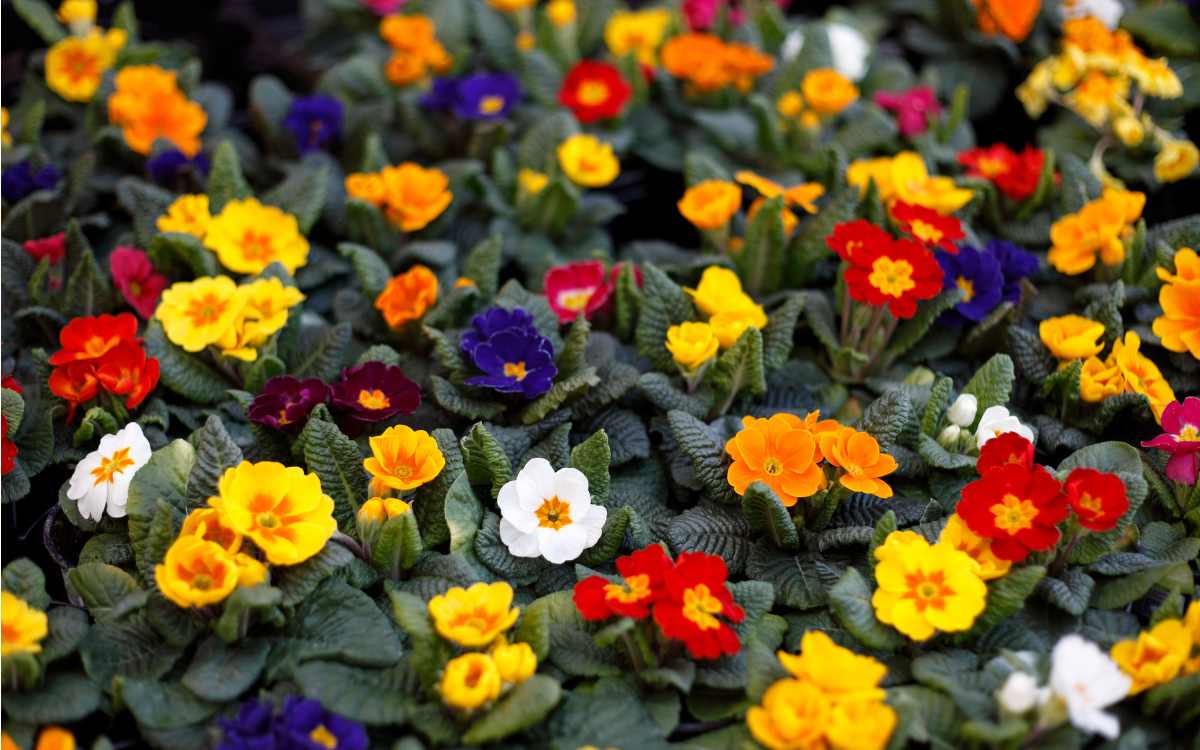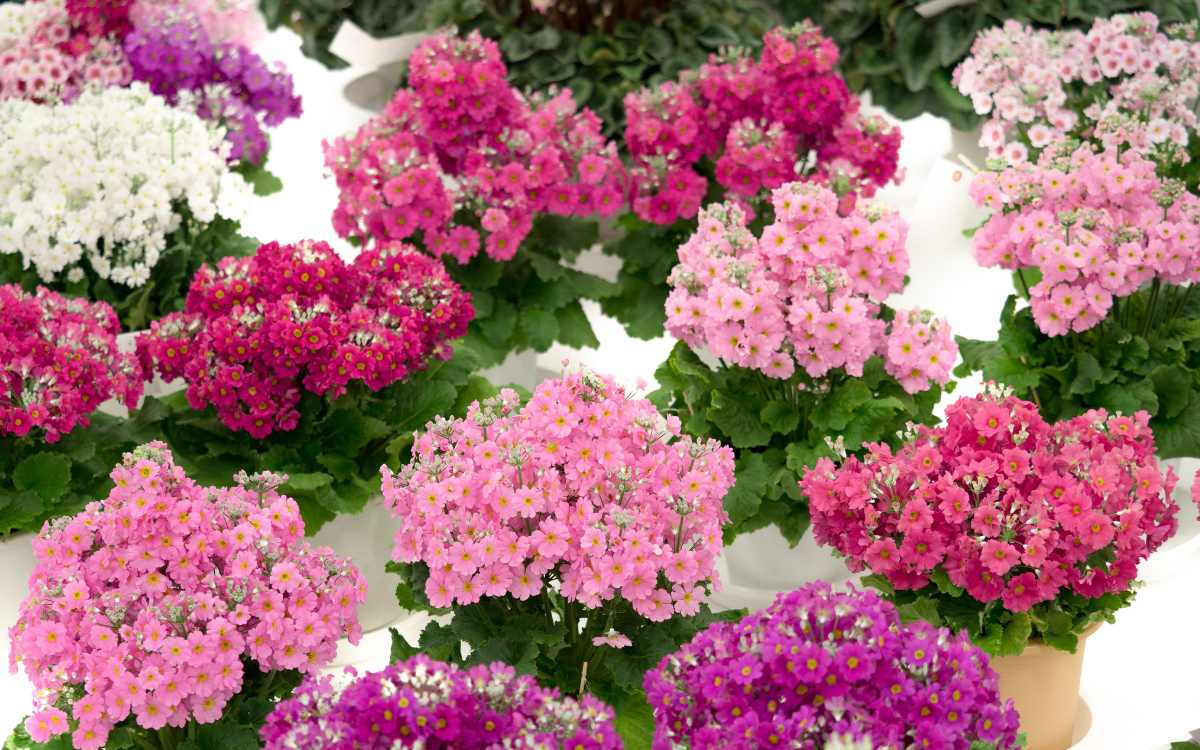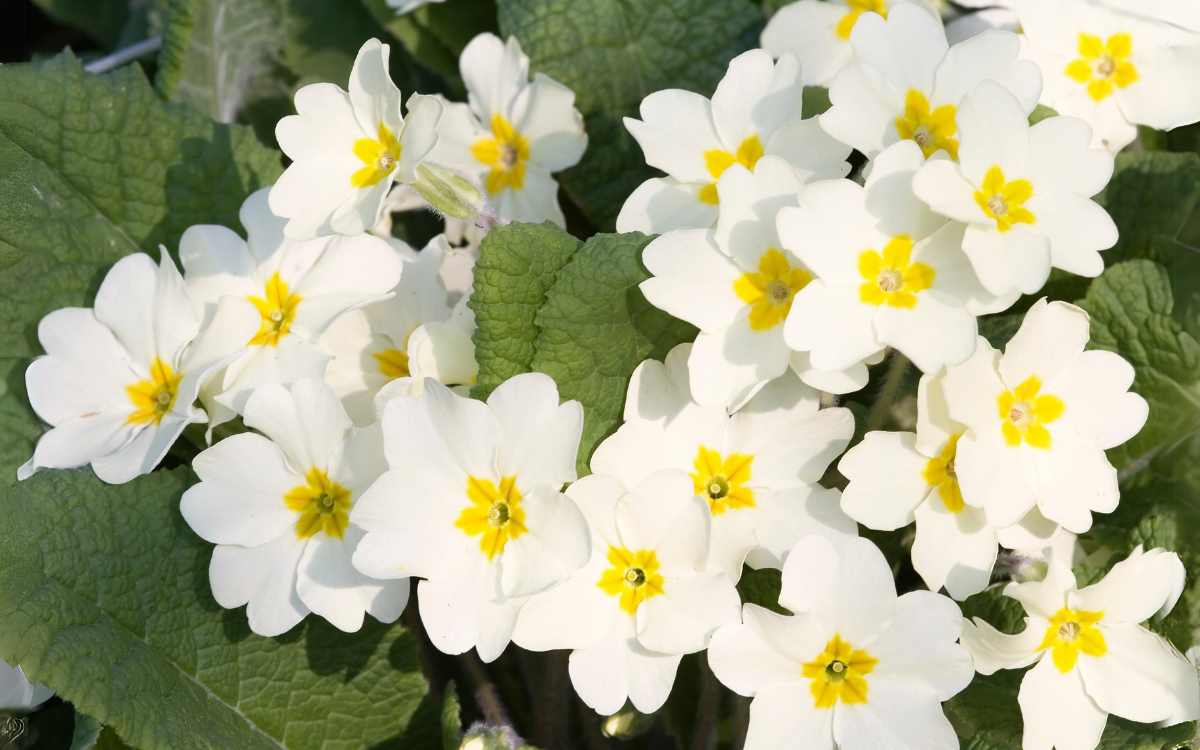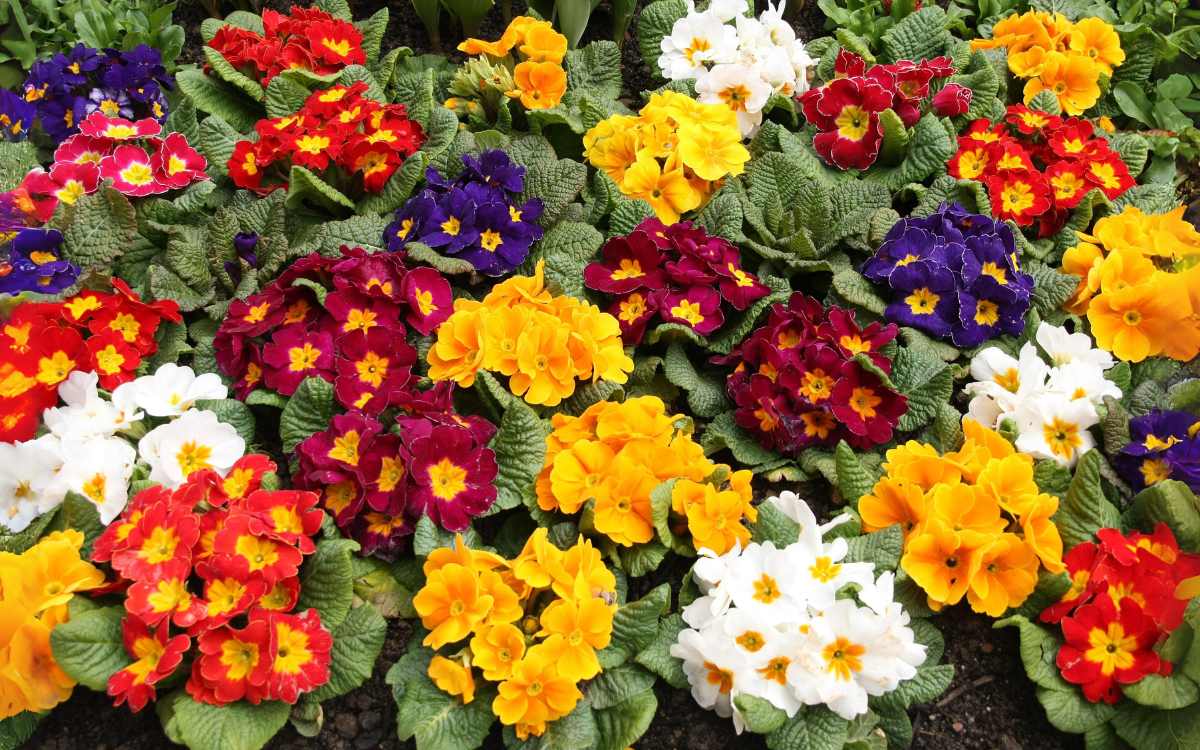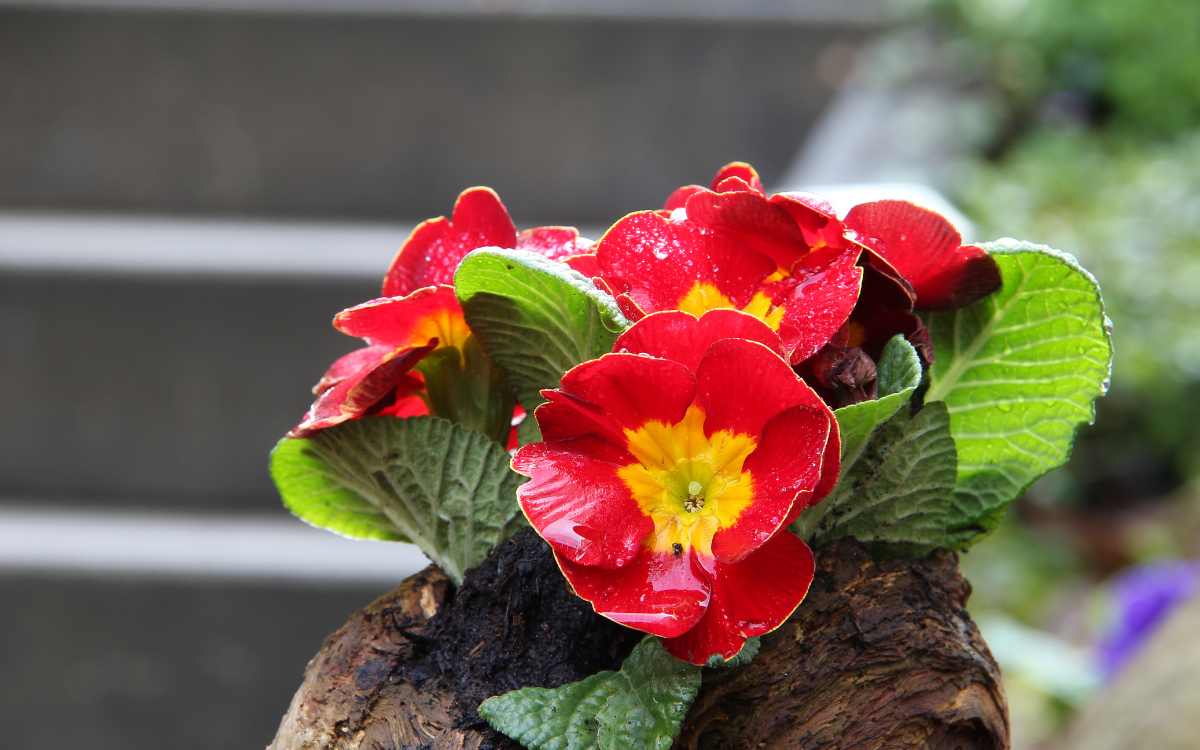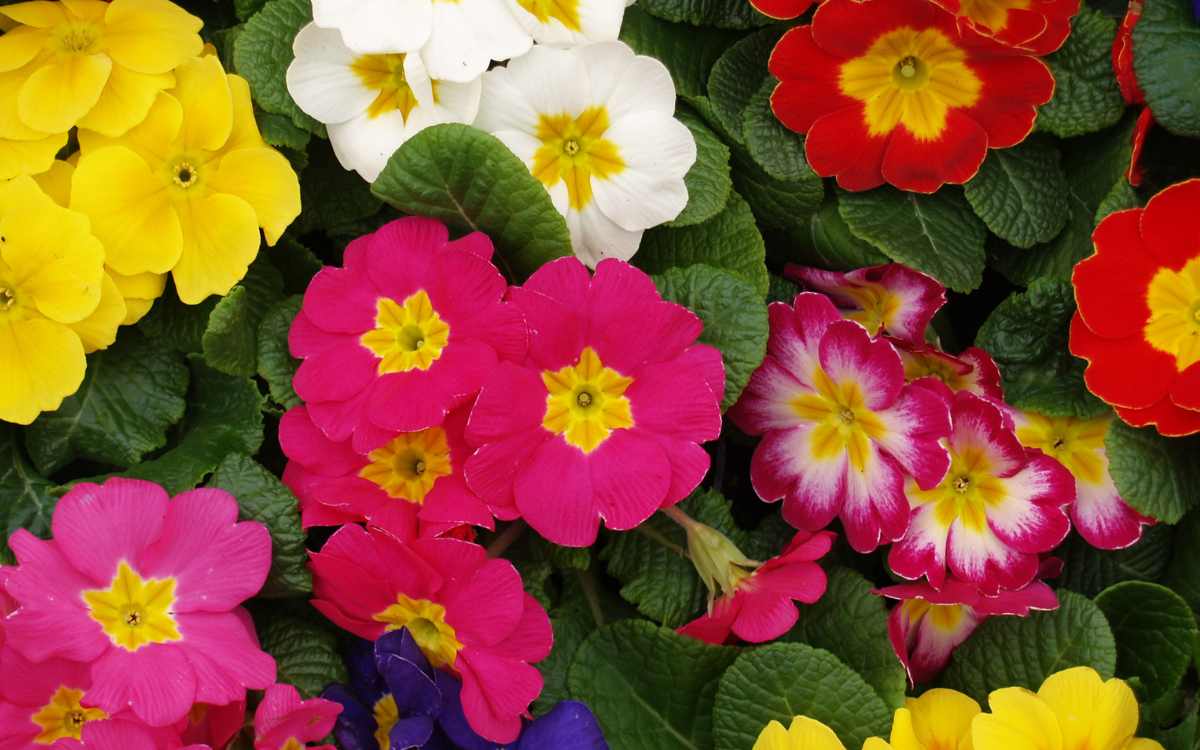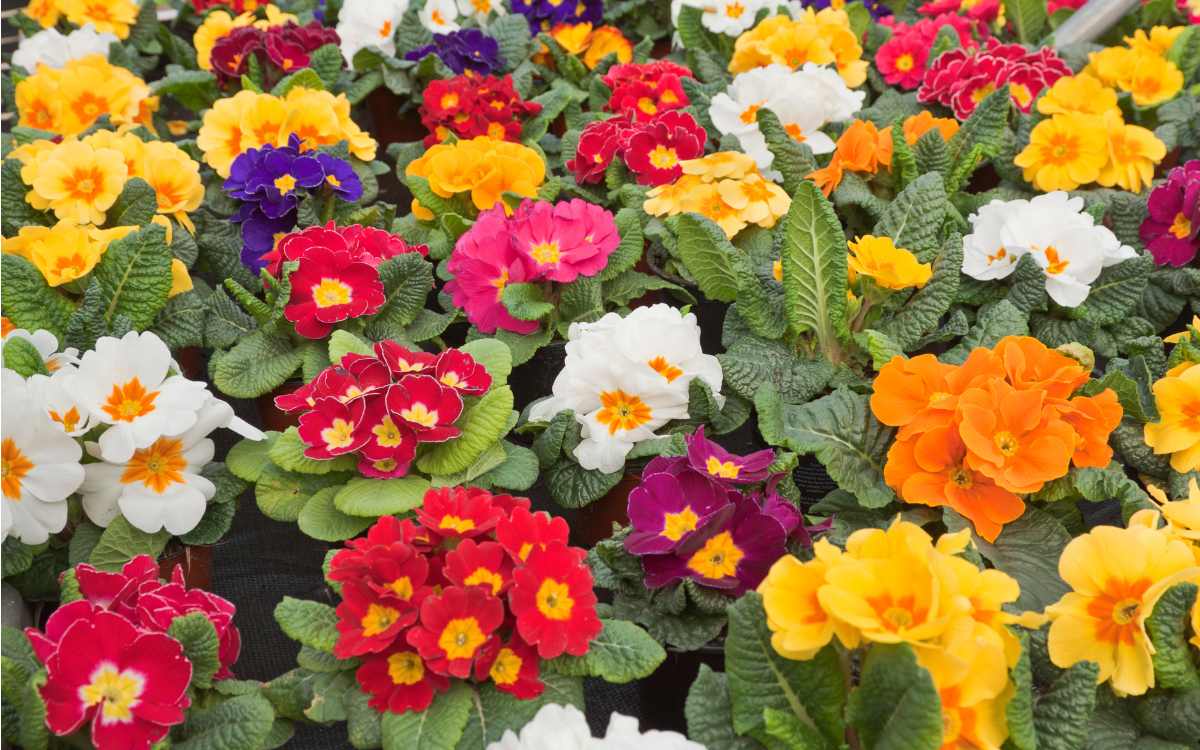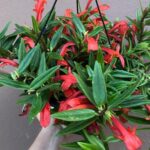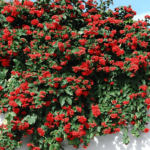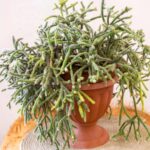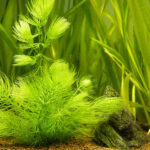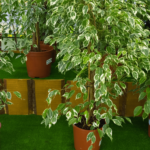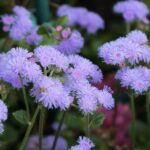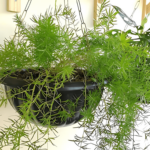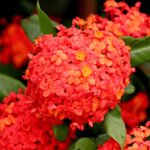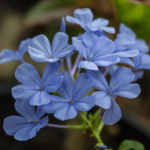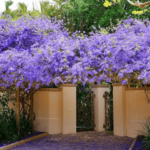Primula popularly known as Primrose is a genus of plants with over 400 species distributed mainly in the northern hemisphere, including temperate regions of Asia, Europe, and North America.
This plant is known for its colorful and fragrant flowers that appear in late winter and spring.
Its flowers can vary in shades of:
- Pink
- Purple
- Red
- Orange
- Salmon
- White
See below for characteristics, curiosities, and cultivation tips for primula.
General Characteristics
Primrose is a perennial plant that usually reaches heights between 15 to 30 cm (6 to 12 inches) (some species can be even taller).
The plants are generally small to medium in size, with long, toothed leaves that form a rosette around a leafless stem. The flowers are clustered in an umbrella shape and have a mild fragrance, making them a popular choice for decorating both indoors and outdoors.
Widely used in border gardens, woodland gardens, and rock gardens. Primroses adapts to various locations and can also be grown in pots and terraces.
Species such as Primula obconica are especially suitable for indoor environments due to their resistance and long-lasting flowers.
Curiosities
Although it is an easy-to-grow plant with medicinal properties, it is important to note that some species of primula are toxic to cats, dogs, and horses.
Furthermore, direct contact with the plant can cause skin and mucous membrane irritation in sensitive people. Therefore, it is advisable to handle primula with care and keep it out of reach of children and pets.
In summary, primrose is a hardy plant, great for decorating homes and gardens and medicinal, but it can also be toxic. Therefore, remember that before using any plant for treatment, consult a doctor.
Below you will learn the step-by-step process for cultivating primrose.
Ideal Climate
The cultivation of primula largely depends on suitable climatic conditions.
Important Tip: Depending on the chosen species, the climatic needs may differ slightly from the care mentioned below, so choose the variety of primrose that best adapts to your region’s climate.
Temperature and Sunlight
This delicate plant prefers a temperate and subtropical climate, avoiding extreme high or low temperatures.
The ideal temperatures for its growth generally range between 14°C and 18°C (57°F and 64°F), providing a moderate and stable environment.
It is important to avoid direct exposure of primrose to intense sunlight, especially during the hottest hours of the day.
The plant can suffer dehydration and stress if exposed to strong sun. Instead, it is preferable to keep primula in cool, shaded areas, receiving enough indirect light for healthy growth.
Read too:
- Watermelon Peperomia: How to Grow and Care Easily
- Manacá: How to Care and Make Seedlings (With Photos)
- Blue Ginger: Properties, Care, and How to Propagate
- Meet the Ghost Orchid: Its History and Characteristics
Humidity and Ventilation
Primula thrives in moderately humid environments, but not overly wet. The soil should be kept moist but not waterlogged to provide ideal conditions for root growth.
Additionally, adequate ventilation is essential to prevent moisture buildup and the development of fungal diseases.
Ensure that the cultivation containers have holes to allow root respiration.
Ideal Soil
The ideal soil for primrose should be well-drained and rich in organic matter.
It needs to be able to retain the necessary moisture for the plant while avoiding waterlogging, which can harm the roots.
A balanced mix of materials such as coconut fiber, peat, humus, and perlite is recommended to create a loose and porous texture, promoting good ventilation and drainage.
The soil should have an acidic to neutral pH, within the range of 6.0 to 7.0. This allows the plant to absorb nutrients effectively, ensuring healthy and vigorous growth.
Adding organic fertilizer can enrich the soil with the necessary nutrients and stimulate plant growth. Incorporating sand or perlite into the soil mix can improve drainage and prevent excess water accumulation.
How to Water
Primula requires an adequate level of moisture to grow and develop, but excess water can be harmful.
It is crucial to keep the soil moist but not waterlogged to prevent root rot.
The frequency of watering varies according to environmental conditions. In summer, when temperatures are higher, primrose requires more water. In winter, when temperatures are lower, watering can be reduced.
To determine if primula needs watering, check the soil moisture by placing your finger in the soil. If the top of the soil is dry, it’s time to water. Avoid creating water pools and waterlogging the soil during watering.
During watering, avoid wetting the primrose leaves, as this can lead to disease development.
Direct the water directly to the plant’s roots.
Preferably water primrose early in the day, avoiding rapid evaporation due to high temperatures. This helps ensure the plant adequately absorbs the necessary moisture.
How to Fertilize
Fertilizing primrose should be done regularly during spring and summer when the plant is actively growing and flowering.
These are the periods of highest nutrient demand.
The use of organic fertilizers, such as homemade compost, provides the plant with a wide range of nutrients, including nitrogen, phosphorus, and potassium. Additionally, chemical fertilizers made specifically for primulas are also a viable option.
When fertilizing, follow the instructions on the fertilizer packaging to determine the appropriate dosage and recommended application intervals. Avoid over-fertilizing, as this can lead to salt buildup in the soil, impairing nutrient absorption by the plant.
Fertilizer can be applied around the base of the plant, whether in liquid, powder, or granular form.
Make sure to avoid direct contact of the fertilizer with the leaves to prevent burns.
Propagation of Primrose
There are two main techniques for propagating primrose: by seeds or by dividing clumps. Here are details on both methods:
Propagation by Seeds
- Planting: Primrose seeds should be planted in fertile soil during spring. It is important to keep the soil moist but not waterlogged to ensure successful germination.
- Germination: Seeds germinate best in a warm and well-lit environment but not directly exposed to sunlight. Germination can take two to four weeks, depending on cultivation conditions.
- Care of Seedlings: Seedlings should be kept in a cool and ventilated place before being transplanted to the permanent location.
Propagation by Dividing Clumps
- Timing: Dividing clumps can be done after the plant’s flowering period ends.
- Procedure: Carefully divide the clumps with clean cutting tools, ensuring each seedling has adequate roots and leaves for healthy growth.
- Planting Seedlings: Plant the seedlings in soil enriched with organic matter and well-drained, ensuring the roots are covered with soil and firmly planted.
Regardless of the chosen method, it is essential to provide adequate soil, moisture, and nutrient conditions for the healthy growth of new plants.
Pests
Whitefly, Aphids, and Other Insects: these insects feed on the plant’s sap. The use of specific insecticides or soap water solutions can help control their population.
Slugs and Snails: Can be controlled with appropriate baits placed near the plants.
Spider Mites: Can cause leaf yellowing and fine webs. The regular use of insecticidal soap or neem oil can help prevent infestations.
Contents that may interest you:
- Gardenia: Characteristics, How to Care and Propagate
- Gazania – How to Grow and Propagate
- Blood Lily (Scadoxus Multiflorus): How to Grow and Care
- Congea Tomentosa (Wooly Congea): Characteristics and Care
- Clitoria Ternatea (Butterfly Pea): Characteristics and Care
Diseases and Other Problems
Powdery Mildew and Downy Mildew: Fungal diseases that can cause white or gray spots on the leaves. Good air circulation and humidity control are effective prevention methods.
Root Rot and Crown Rot: Fungal diseases that affect the plant’s base, leading to wilting and rotting. Well-drained soil and proper watering control are essential to avoid these problems.
Excess Water and Sun Exposure: Excessive water buildup can lead to root rot, while excessive sun exposure can burn or dry the leaves.
Leaf Burn by Fungi: It is a common problem but can be controlled with preventive measures such as good air circulation and controlled humidity.

